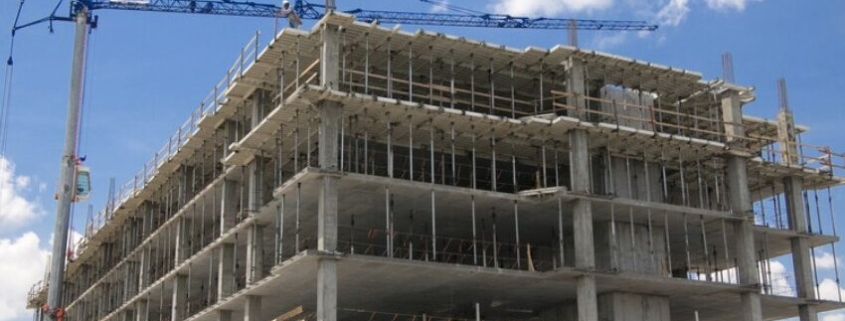Medical Center of the Rockies is growing into the future with a planned $280 million expansion that will add roughly 100 beds, nearly double the capacity of the emergency department and add a specialized cancer center at the Loveland campus.

(RENDERING CREDIT: UCHealth)
UCHealth, which owns and operates MCR, just announced it would break ground late next year on a five-story tower on the north side of the hospital to serve trauma-surgical, medical-surgical and surgical ICU patients. It will expand the hospital’s capacity from 187 to 283 with room to grow up to 319 beds.
“For several years, our hospitals in Northern Colorado have been operating at or near full capacity, and this investment will allow us to continue to meet the needs of our growing community,” said Kevin Unger, the president and chief executive officer of the hospital. “In addition to an increase in patient bed capacity, we are thrilled to build a comprehensive cancer center and expand our cardiac and imaging services.”
Northern Colorado grew rapidly in the last decade, with Weld County’s population up more than 30% and Larimer’s up nearly 20%. Partly because of that growth, the state has fewer hospital beds per capita than the U.S. average, according to The Kaiser Family Foundation.
The U.S. averages 2.38 beds per 1,000 residents; Colorado has 1.91 beds, the eight lowest among all states and the District of Columbia. Money for the expansion will come largely from UCHealth reserves and may include some philanthropic component.
“We don’t anticipate going out and doing any outside loans or bonds,” Unger said. “As a nonprofit health system, that’s what reserves are for. We don’t pay shareholders. All of our reserves are used for staffing, new technology, equipment and buildings. We are fortunate in Northern Colorado … to be in a population that’s growing rather than shrinking. Our goal is to continue to meet community needs, and for that we need additional capacity. The tower is one of two that will eventually be built at MCR, The beauty of MCR is because it was a greenfield build, we already planned for two new towers.”
The second tower will likely be built sooner rather than later based on the region’s rapid growth.
“We do have that expansion capability at MCR. We’re seeing higher acuity, longer lengths of stay, and population growth driving this as well as unbelievable physicians, nurses and providers within the facility,” Unger said.
With a new tower comes the need for 1,200 to 1,400 additional employees to staff the tower.
“It’s a blessing this project will take awhile to complete; it will take us awhile to staff it,” Unger said. “Construction could be the easier part of the two.”
How Will Loveland And Fort Collins Cancer Centers Differ?
The cancer center is expected to start seeing patients in mid-2024, and the new tower is expected to open in 2026. The new cancer center will feature high-dose radiation therapy, which patients currently travel to metro Denver to receive, as well as a new gynecological oncology clinic; a new radiation oncology program, including a linear accelerator; and additional medical oncology clinic and infusion space.
When it opened in 2014, the Fort Collins cancer center at UCHealth’s Harmony Road campus had room for three linear accelerators and is now at capacity.
“The core of the cancer program will still be based at Harmony … this will be more of a hub-and-spoke model,” Unger said.
Expansion Happening Throughout UCHealth Northern Colorado
The expansion comes on the heels of a $76.5 million expansion and renovation of Poudre Valley Hospital in Fort Collins and the addition of 34 beds at UCHealth’s Greeley hospital that is building out the fourth floor of the 3-year-old facility.
With the updates, the Greely facility will have 87 available beds. It opened with 51 beds and added two ICU beds during the pandemic. The PVH renovation will revamp the front entrance and two of its five floors. It is expected to be finished in time for the hospital’s 100th anniversary in 2025.
Medical Center of the Rockies opened on Valentine’s Day 2007, relieving pressure on Poudre Valley Hospital and bringing UCHealth services to the Loveland area.
In July, MCR became the only Level 1 trauma center in Northern Colorado. UCHealth Poudre Valley Hospital in Fort Collins is a Level III trauma center and Banner Health’s NCMC is a Level II trauma center. MCR has been operating as a high-level trauma center for a couple years but didn’t have the volume of trauma patients required by the state to push it to Level 1 status until now.
The state Department of Public Health and Environment requires Level 1 trauma centers to have around-the-clock coverage by trauma surgeons and specialists in orthopedics, neurosurgery and anesthesiology, either in-house or on-call. The state also requires the hospital to provide trauma prevention and education.
In 2021, MCR treated 1,853 patients who met the criteria to be included on the trauma registry. That was more than double the 880 trauma patients treated at MCR when it opened in 2007.
The $280 million project at MCR will include:
• A five-story tower to serve trauma-surgical, medical-surgical and surgical ICU inpatients, among others.
• A cancer center on the first floors of both the north medical office building and the new tower. The new cancer center will feature high-dose radiation therapy, which patients currently travel to metro Denver to receive, as well as a new gynecological oncology clinic; a new radiation oncology program, including a linear accelerator; and additional medical oncology clinic and infusion space.
• The emergency department will grow from 27 to 49 rooms and include a new entrance.
• Two electrophysiology labs and two cardiac catheterization labs will be added to the south side of the existing hospital building.
• Imaging will be expanded with additional CT, ultrasound and MRI services and an additional interventional radiology suite on the east side of the existing hospital building.
• Parking will be expanded for patients and staff.
Source: Coloradoan





